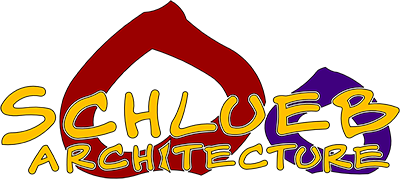2021.04.06 – Lecture 4
Rafael Guastavino and his son’s engineering innovations with long span, thin shell, and double dome vaults, using traditional Catalan cohesive construction methods with thin terracotta tiles.
Boston Public Library (Boston, 1889-1895, Charles McKim architect) interlocking flanged tile innovation used in cohesive construction structural tile vaults, patented in 1891.
University of Virginia Rotunda (Charlottesville, 1899, Thomas Jefferson architect) double dome for exterior weather protection and interior decorative surface, atop columns supported by cohesive construction structural tile shallow board vaults.
Porter Hall (Pittsburgh, 1905-07, Henry Hornbostel architect) shallow board vaults with exposed herringbone pattern finish supported by cohesive construction structural tile arches in repeated series. First Guastavino work in Pittsburgh.
Rodef Shalom Synagogue (Pittsburgh, 1906, Henry Hornbostel architect) cohesive construction structural tile square double dome, replacing original steel frame and concrete shell dome design.
Calvary Episcopal Church (Pittsburgh, 1906, Ralph Adams Cram architect) Gothic style cohesive construction structural tile crypt groin vaults, based on maó de pla (brick of flat) method developed by Mestres d’Obres Juan Franch (Valencia, 1382).
Doherty Hall (Pittsburgh, 1908-09, Henry Hornbostel architect) cohesive construction structural tiles used for shallow board vault bridge between buildings.
National Museum of Natural History (Washington D.C., 1909, Charles McKim architect) cohesive construction structural tile flying buttresses supporting double domes.
Staged Tile Layers ‘Mature System’ (Woburn, 1910, R. Guastavino Company) Plaster of Paris fast set first layer without formwork, upper/outer second layer laid in Portland Cement mortar bed staggering joints, under/interior third layer of exposed decorative finish tile set in Portland Cement mortar bed staggering joints, stylized raised square mortar joints to finish.
Steel Reinforced Dome Patent (Woburn, 1910, R. Guastavino Company) cohesive construction structural tile arches, vaults, and domes reinforced with steel bars.
Baker Hall (Pittsburgh, 1914, Henry Hornbostel architect) steel frame supporting traditional brick structural arch.
Baker Hall (Pittsburgh, 1914, Henry Hornbostel architect) elliptical oculus within shallow pendentive cohesive construction structural tile dome.
Baker Hall (Pittsburgh, 1914, Henry Hornbostel architect) cohesive construction structural tile serpentine stair vaults without steel reinforcing bars.
St. Boniface Roman Catholic Church (Pittsburgh, 1926, A.F.
Link architect) central pendentive cohesive construction structural tile dome with pierced arched windows, buttressed with adjacent half-dome and barrel vaults.
Sweets Catalogue Detail Sheet (Woburn, 1931, R. Guastavino Company) roof section of cohesive construction structural tile dome vault, with exposed herringbone pattern finish in several shades of gray and buff, giving a pleasing and textural effect.
Buhl Planetarium (Pittsburgh, 1938, Charles T. Ingham
& William Boyd Jr. architects) long span 65 ft. diameter thin shell dome, with 2 inch hollow structural tile for insulation in cold climates.
East Liberty Presbyterian Church (Pittsburgh, 1942, Ralph Adams Cram architect) Gothic style cohesive construction structural tile crypt groin vaults. Last Guastavino work in Pittsburgh.
Mellon Arena (Pittsburgh, 1961, Mitchell & Ritchey architects) steel frame shallow retractable dome. Demolished in 2011, after 50 years.
Armadillo Vault (Venice Architecture Biennale, 2016, Block Research
Group, ETH Zurich) unreinforced cut sandstone asymmetric vault, dry stacked without mortar.
Beyond Bending (Venice Architecture Biennale, 2016, Block Research Group,
ETH Zurich) unreinforced concrete stiffened vault.
Lecture Audio (podcast):
Download Lecture Notes






















